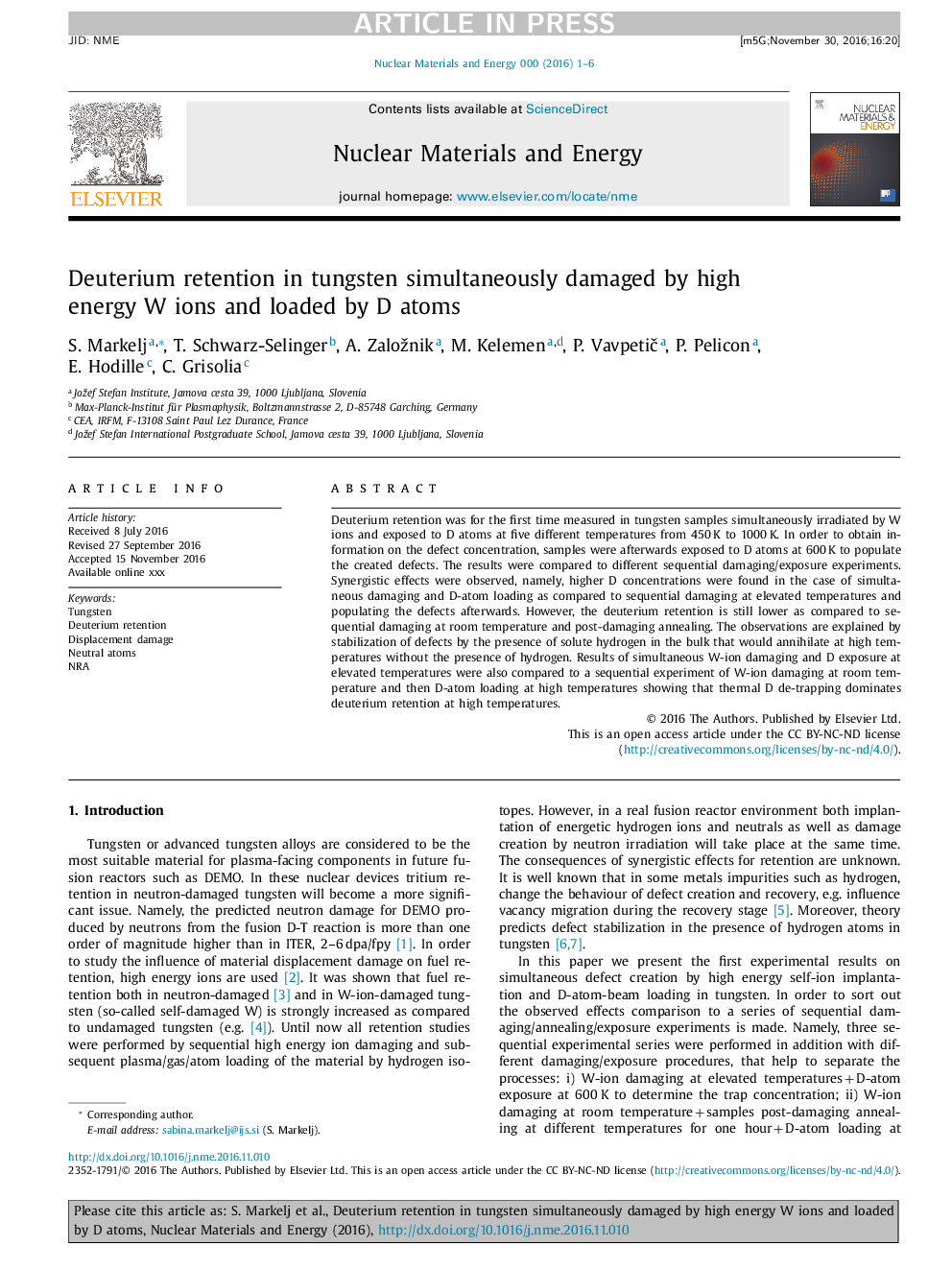| Article ID | Journal | Published Year | Pages | File Type |
|---|---|---|---|---|
| 7987417 | Nuclear Materials and Energy | 2017 | 6 Pages |
Abstract
Deuterium retention was for the first time measured in tungsten samples simultaneously irradiated by W ions and exposed to D atoms at five different temperatures from 450Â K to 1000Â K. In order to obtain information on the defect concentration, samples were afterwards exposed to D atoms at 600Â K to populate the created defects. The results were compared to different sequential damaging/exposure experiments. Synergistic effects were observed, namely, higher D concentrations were found in the case of simultaneous damaging and D-atom loading as compared to sequential damaging at elevated temperatures and populating the defects afterwards. However, the deuterium retention is still lower as compared to sequential damaging at room temperature and post-damaging annealing. The observations are explained by stabilization of defects by the presence of solute hydrogen in the bulk that would annihilate at high temperatures without the presence of hydrogen. Results of simultaneous W-ion damaging and D exposure at elevated temperatures were also compared to a sequential experiment of W-ion damaging at room temperature and then D-atom loading at high temperatures showing that thermal D de-trapping dominates deuterium retention at high temperatures.
Related Topics
Physical Sciences and Engineering
Energy
Nuclear Energy and Engineering
Authors
S. Markelj, T. Schwarz-Selinger, A. Založnik, M. Kelemen, P. VavpetiÄ, P. Pelicon, E. Hodille, C. Grisolia,
